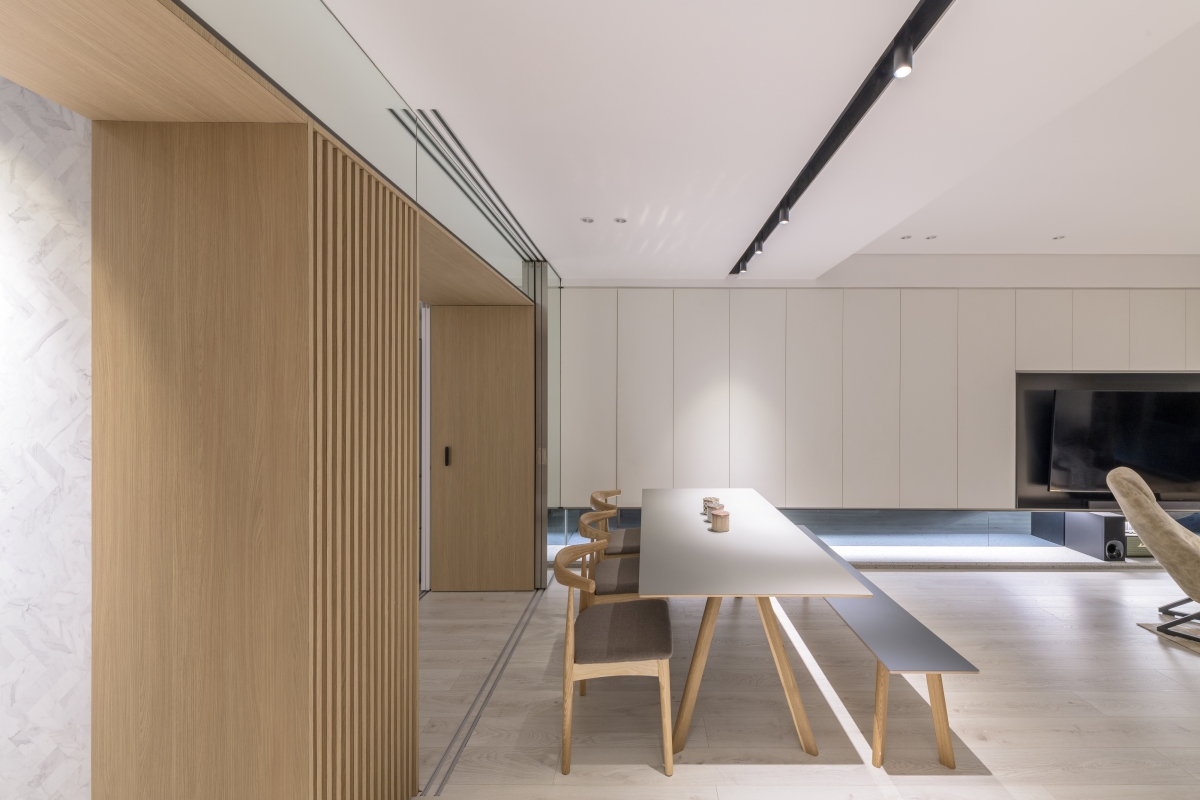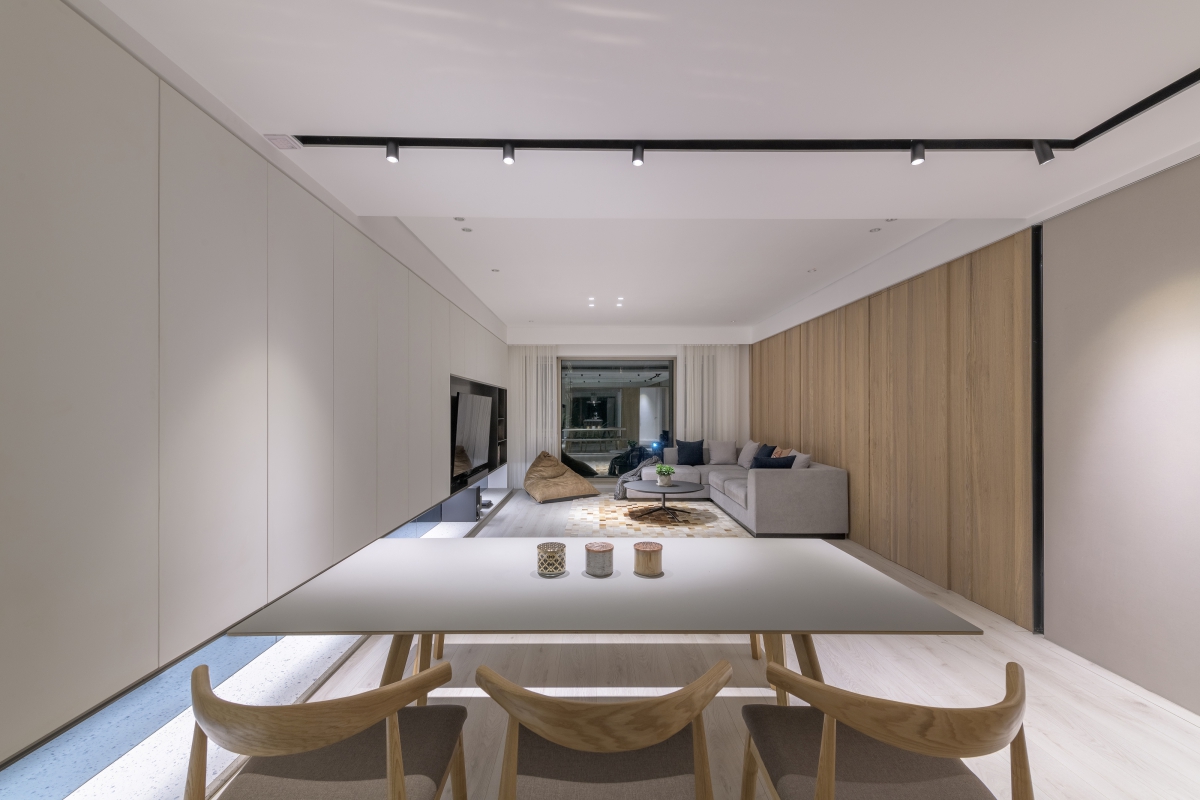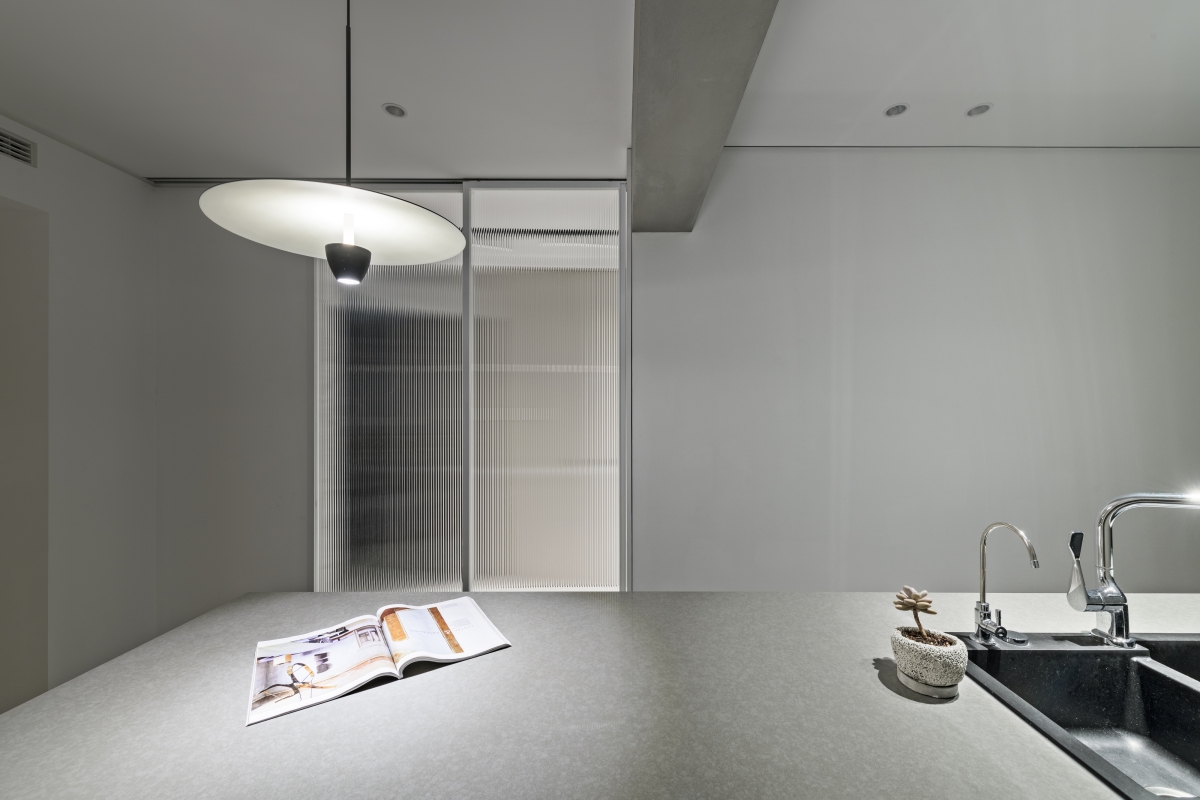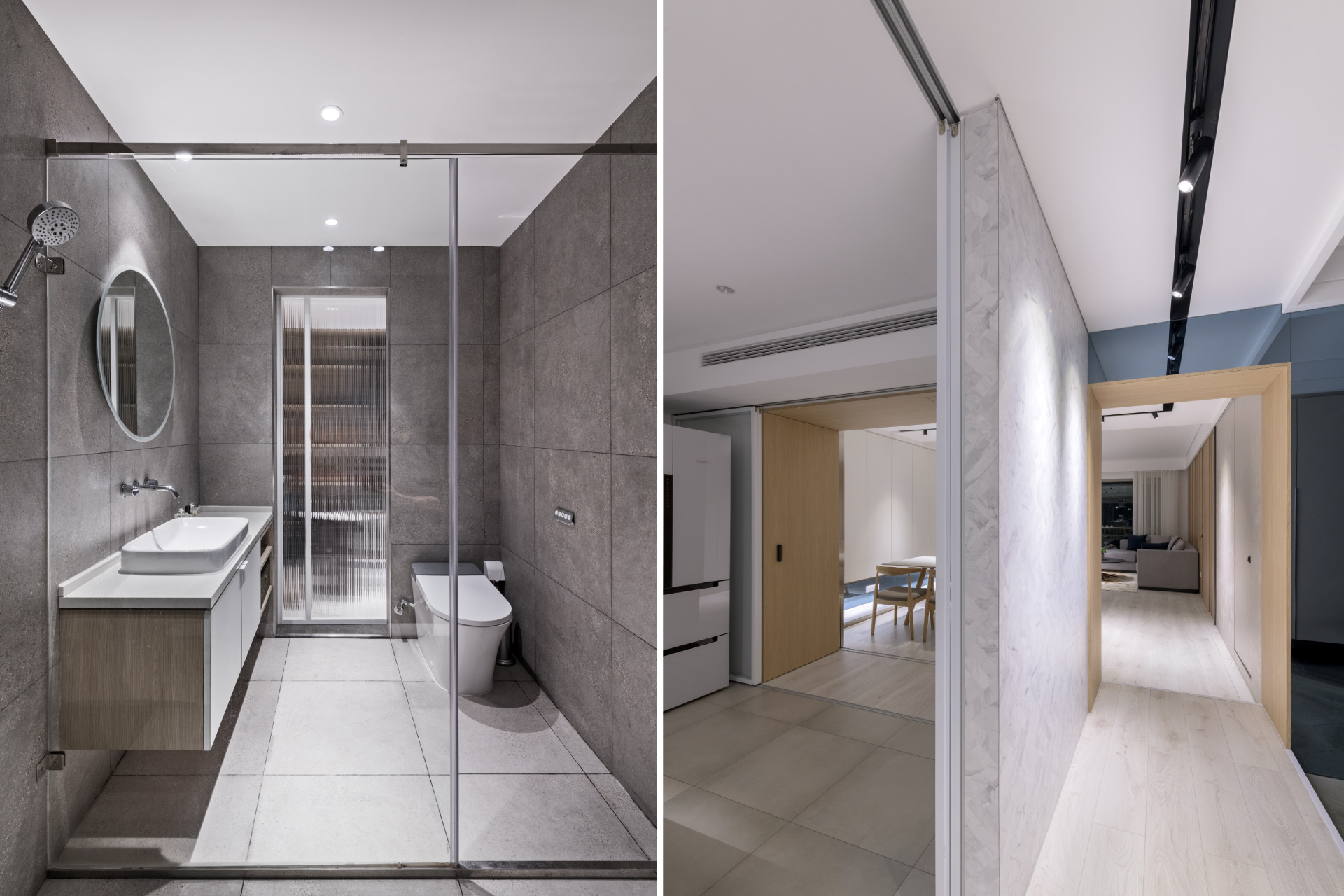Completion Year: 2019
Status: Built
Completion Year: 2019
Status: Built
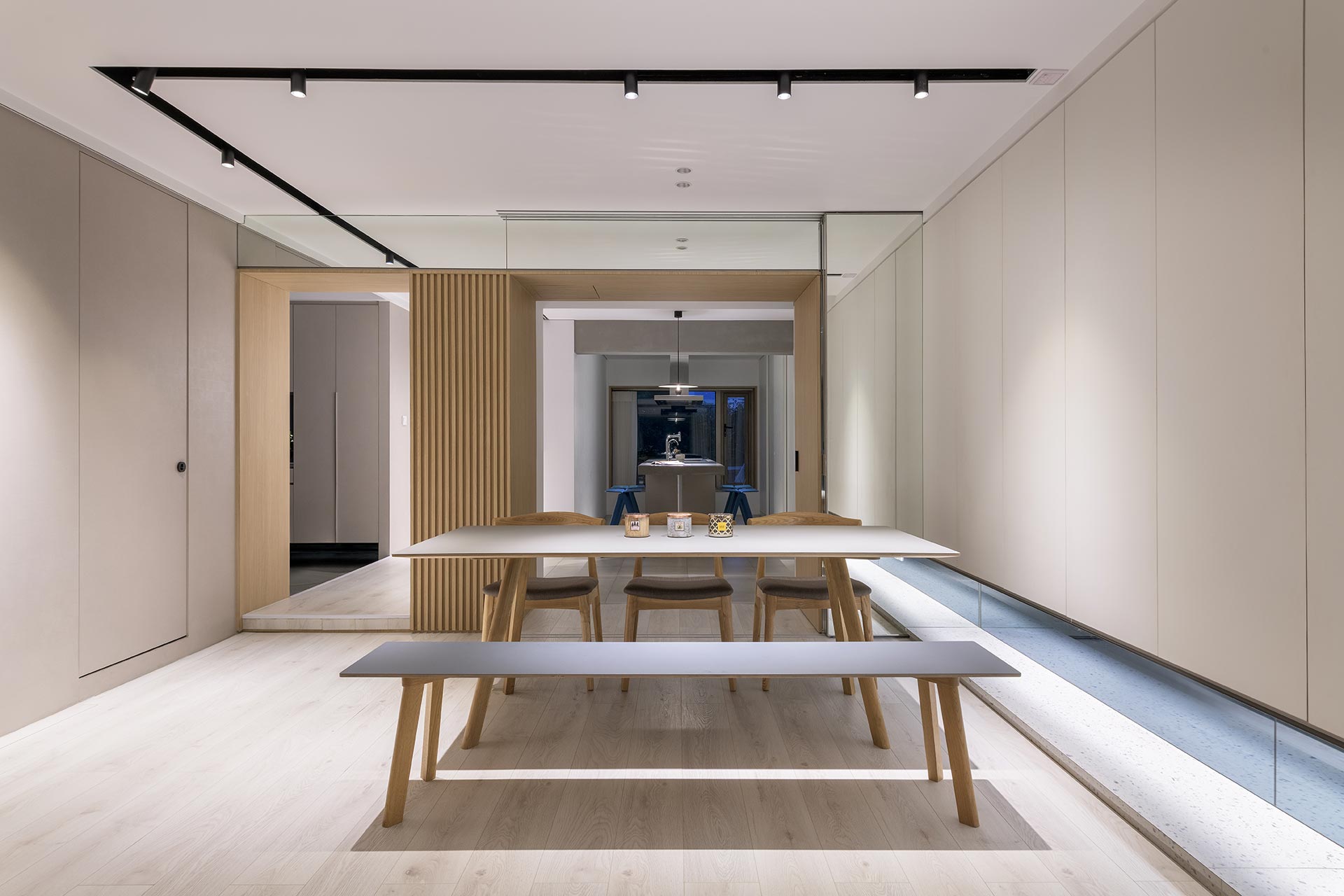
長向住宅-新世代的都會生活空間
Elongated Residence – New-Generation Urban Living Space
上海,一座匯集了近代東方文明與商業薈萃的城市,黃浦江岸的浦東新區,一幢幢現代華廈沿江畔拔地而起,形塑了當代都會高度都市化的繁榮樣貌。本案即是位處該區的新式大樓住宅,男主人為阿里巴巴集團高階主管,年輕夫婦因工作之故由台灣舉家搬遷至上海,考量其生活型態、空間使用需求,以及工作上對互聯網的高度依賴,我們特別將L形平面空間巧妙地配置成由客、餐廳與廚房組成的公共區域,與包含主臥房及客房的私家空間,透過可開闔的拉門隔屏,滿足不同的空間使用需求,並透過設計手法強化空間的線性氛圍。
Shanghai, a city that brings together modern Eastern civilization and business opportunities, the New Pudong Area on the banks of the Huangpu River, a modern residential building along the riverside, shaped the prosperity of our contemporary urbanization. This project is a new-style building in this district. As the male client is A Senior Director in Alibaba Group, the young couple moved to Shanghai from Taiwan for professional relocation, and considering their lifestyle, space usage needs, and reliance on internet, the design team has specially arranged the L-shaped floor plan into a public area consisting of a living room, a dining area, and a kitchen, with the private space containing the master bedroom and the guest bedroom, which can satisfy various spatial usage requirements through a flexible sliding door, and enhances the linear spatial mood through design techniques.
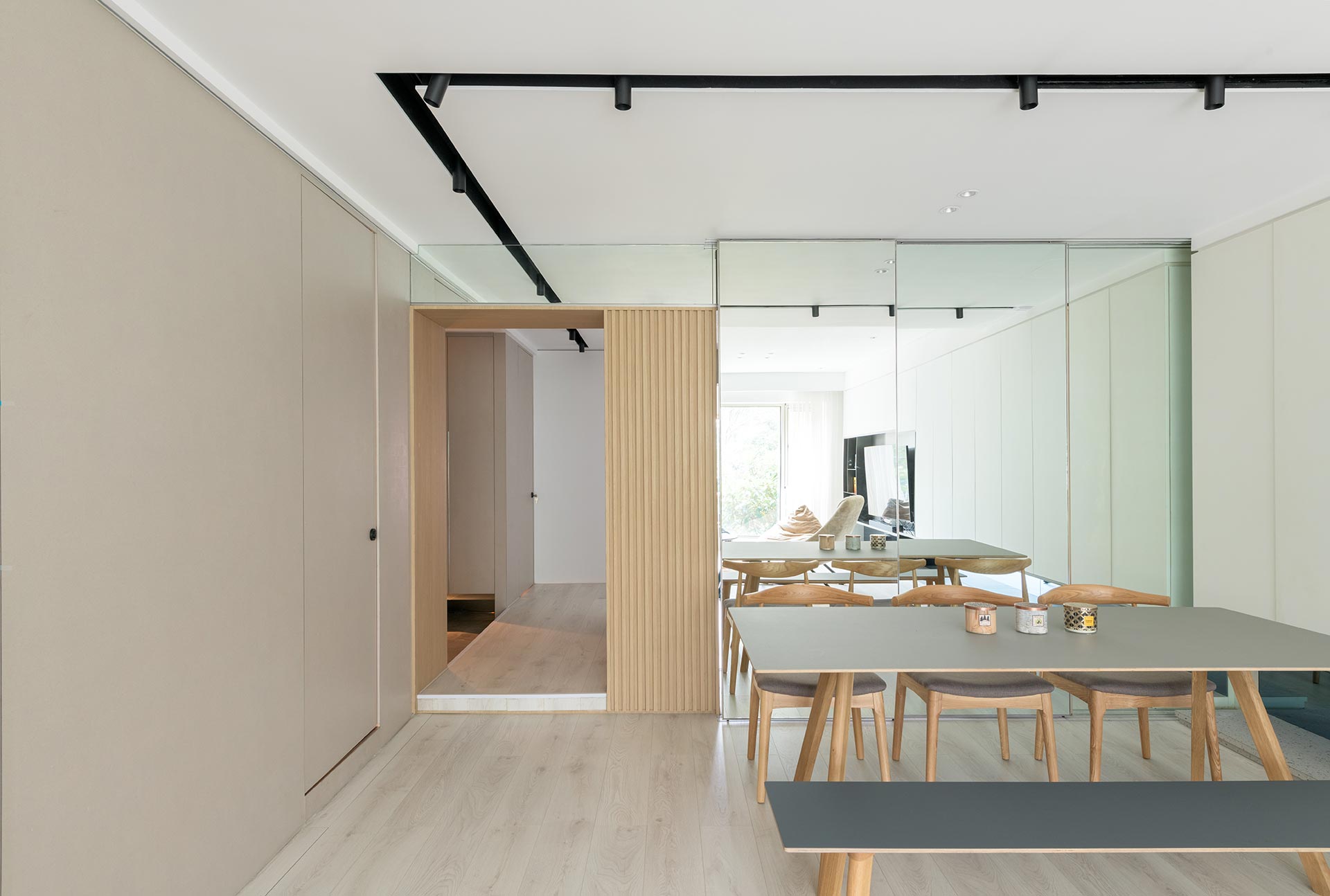
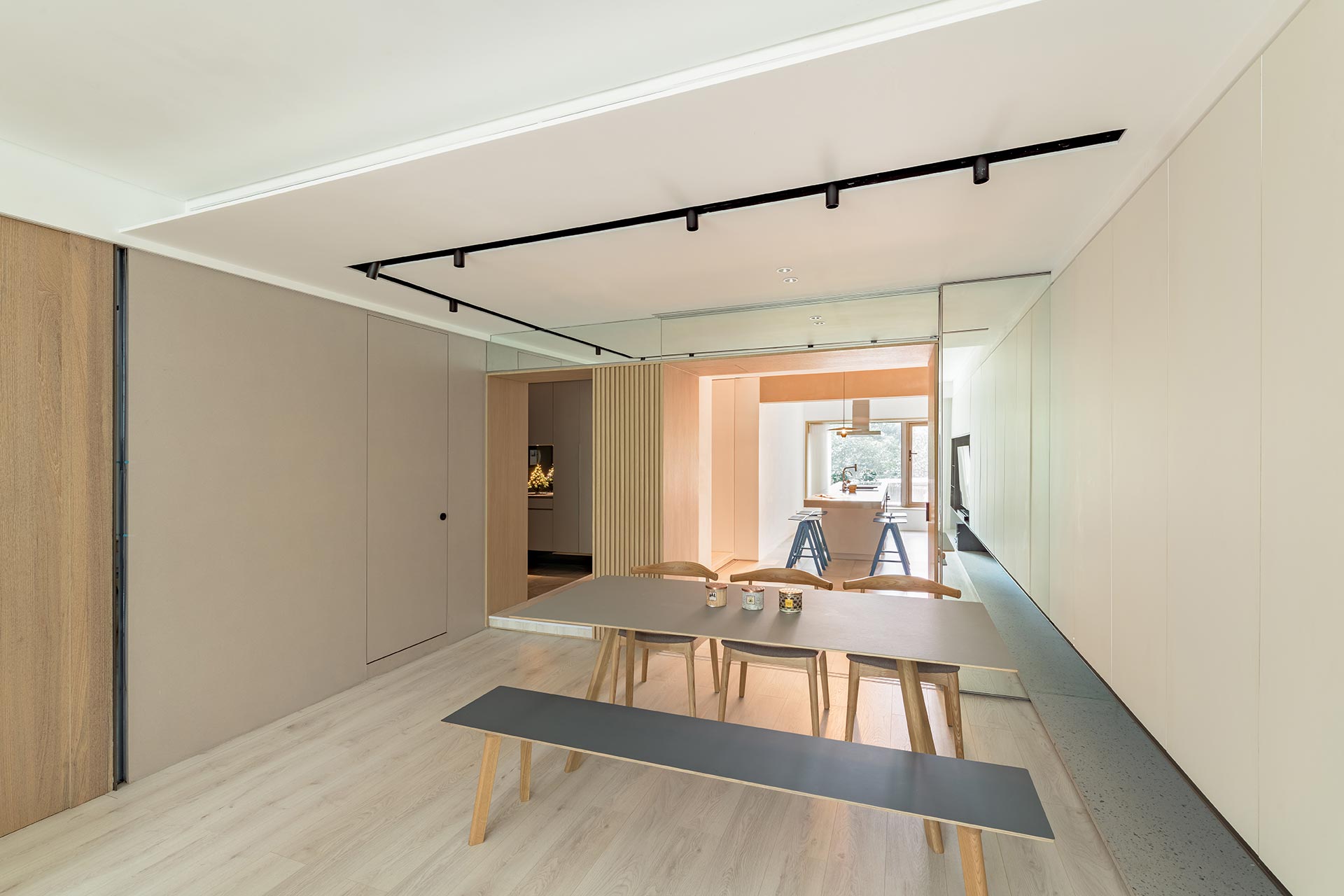
可變動性-靈活運用的空間機能設計
Variability - Flexible Spatial Functional Design
居家空間因應不同使用狀態,設計上亦強調空間多元使用的可變動性,由於女主人長期習舞,亦有在家練習之需求,我們特別減少公共區域的陳設,以少數可移動傢俱搭配高度收納性的櫥櫃為主,以便隨時可調整為舞蹈空間,同時配合連結廚房的介面也以鏡面拉門設計,開闔之間可延伸公共場域的尺度,方便親友來訪時有更大的使用區域,並兼顧視覺拉伸的軸向性。推拉門後方即是以開放式中島設計的廚房,延續公共區域的收納式設計,具有大量廚具鍋碗瓢盆收納需求的廚房,也以壁櫃營造現代簡約的空間感,並在中央設置結合烤箱、爐具、水槽與吧台的大長桌,讓廚房除了日常煮飯、燒菜的空間外,也成為男主人工作、視訊會議,以及家人閱讀、交談的複合活動所在。
In order to address different usage demand of this living space, the design sought to emphasize the variability in the multi-usage of the space, and as the female client has had a long history in dance learning which means that there is also the need for practice at home. Consequently, the amount of furnishings was reduced in the public domains, instead there were a small number of movable furniture with high storage cabinets which can be adjusted to give way to dance-practice space at any time, while the elevations of the kitchen was also designed as a mirrored sliding door, as the scale of the public domain was extended between the opening and the closing of the sliding door, which can accommodate the visits of families and friends, as well as articulating the axial nature of visual extension. Behind the sliding door was a kitchen designed with an open island bench-top, which is a continuation of the storage design of the public domain. The kitchen needs to accommodate storage for a large number of kitchen utensils, pots and pans in the setting of a modern and simple space, as well as being equipped with an oven in the center. The long table with the stove, the sink and the bar space made the kitchen a special social and event space for the clients to carry out activities such as video conferencing, and family reading and talking, in addition to the daily cooking and cooking space.
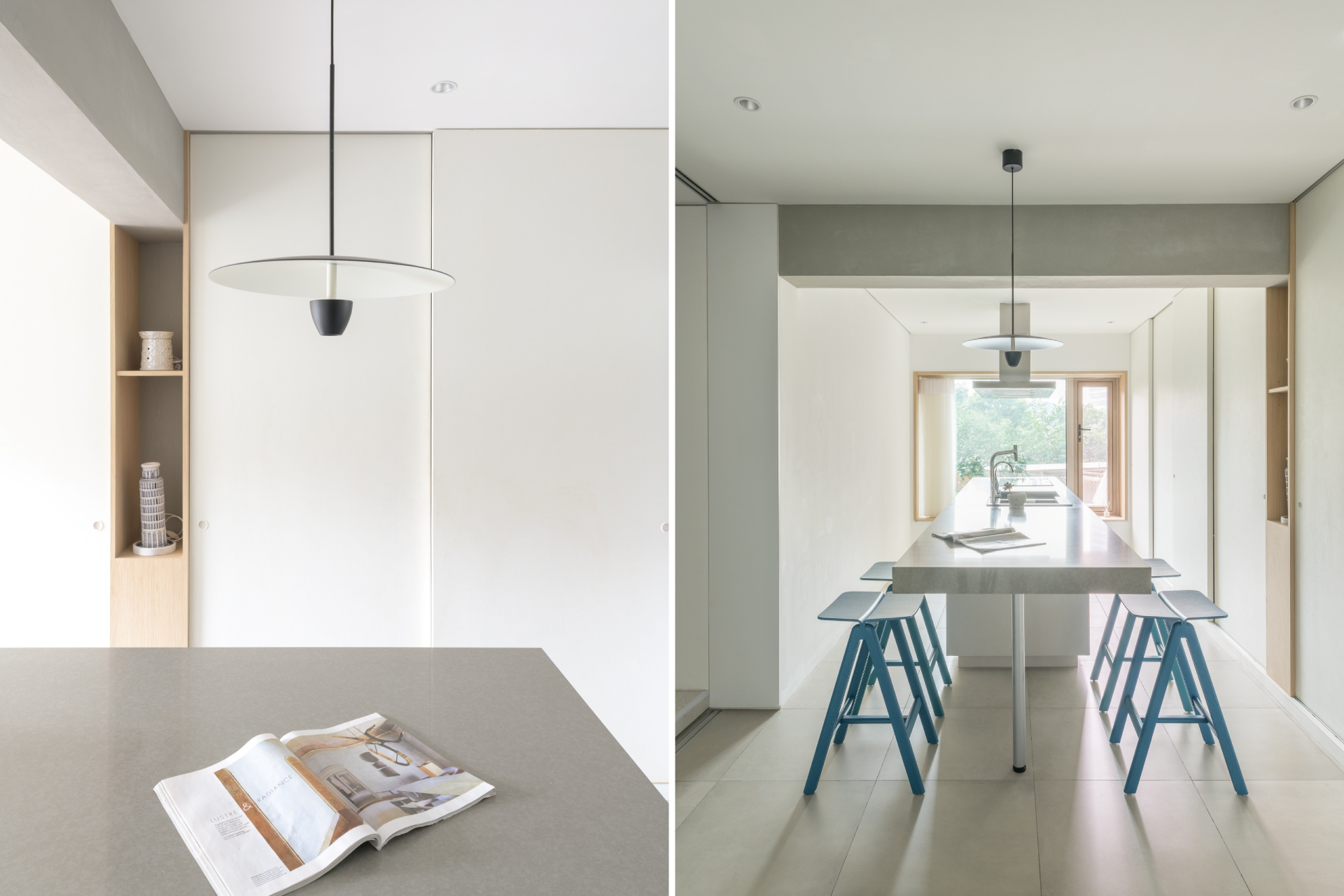
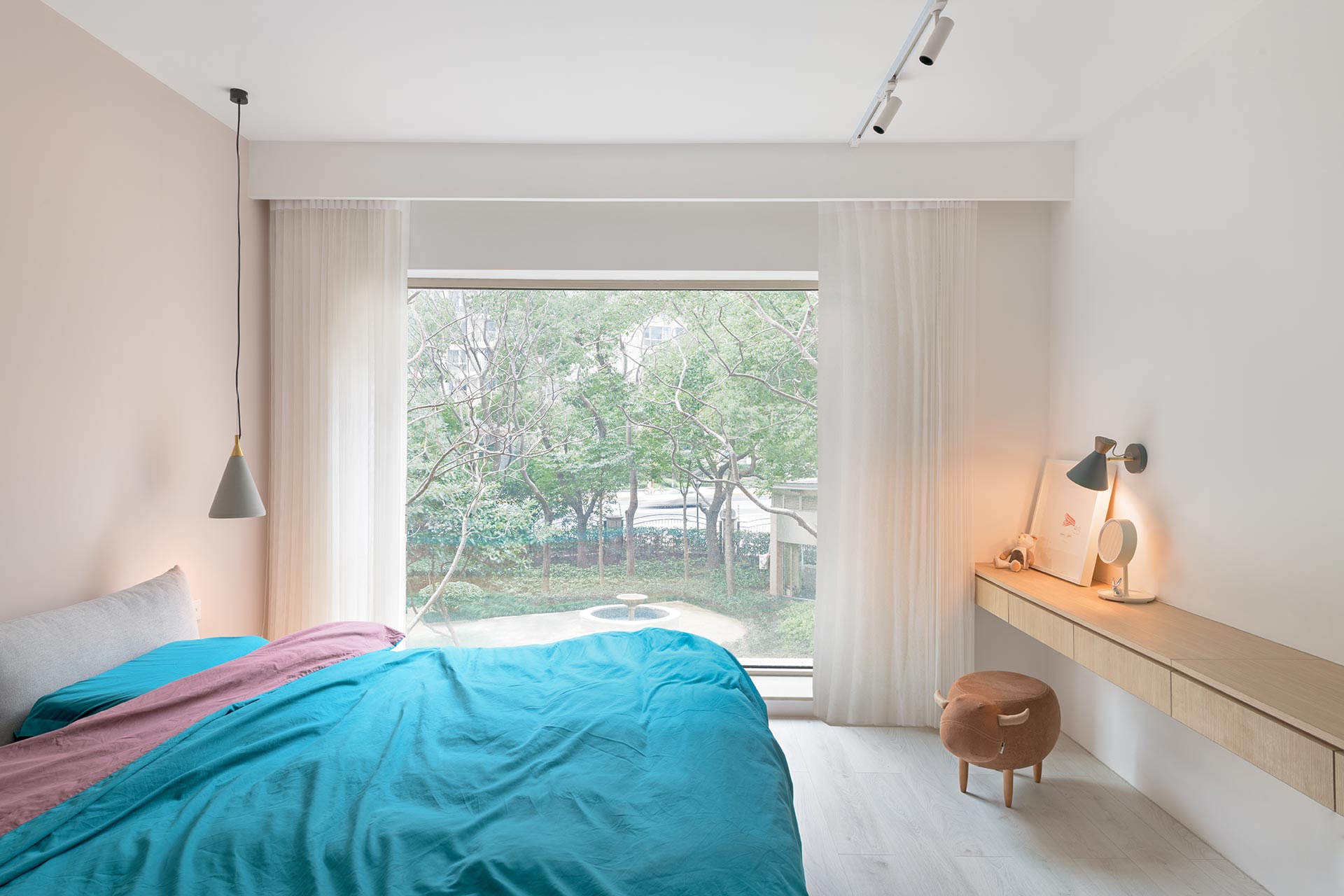
溫潤質感-以白色調與木構築混搭的居家場域
Quality of Warmth – Residential Domain Constructed by White-Color Tone and Timber Work
室內空間以俐落的現代簡約風格呈現,以純淨無瑕的白色作為空間主調,透過大量淺色系木材搭配,營造質樸、素雅的居家生活情境。甫自玄關處進入室內,以白色水磨石為素材的壁面,配合抬高地坪做為區隔空間內外的分界,入口處右側為主要生活場域-包含客、餐廳與主臥房,綿延的木質地板、一體性的梧桐木皮壁面與錯落的垂直向分割,藉由木構築的自然觸感,建構出屬於「家」獨有的溫潤質感。為了強化空間的一致感與延續性,特別設計將串聯空間的出入口隱身於牆面中,強化場域的整體感與儀式性。
As the interior was presented in a modern and minimalist style, with a clean, flawless white color spatial theme, a mix of light-colored timber work created a rustic and elegant home living environment. Upon entry, the wall with white Terrazzo, complemented by raised floor as the boundary between the inside and outside of the interior space, and to the right-hand side of the entrance, the main living area that includes the guest bedroom, dining area, and master bedroom, the stretches of wooden floor stretches with a continuous elevation treated with paulownia veneer with intersecting divides, with underlying natural texture of timber work, conveyed a unique home-like quality. In order to strengthen the consistency and continuity of the space, the design especially concealed the entrance and exit of the connected spaces in the wall to enhance the overall sense and rituality of the interior domain.
